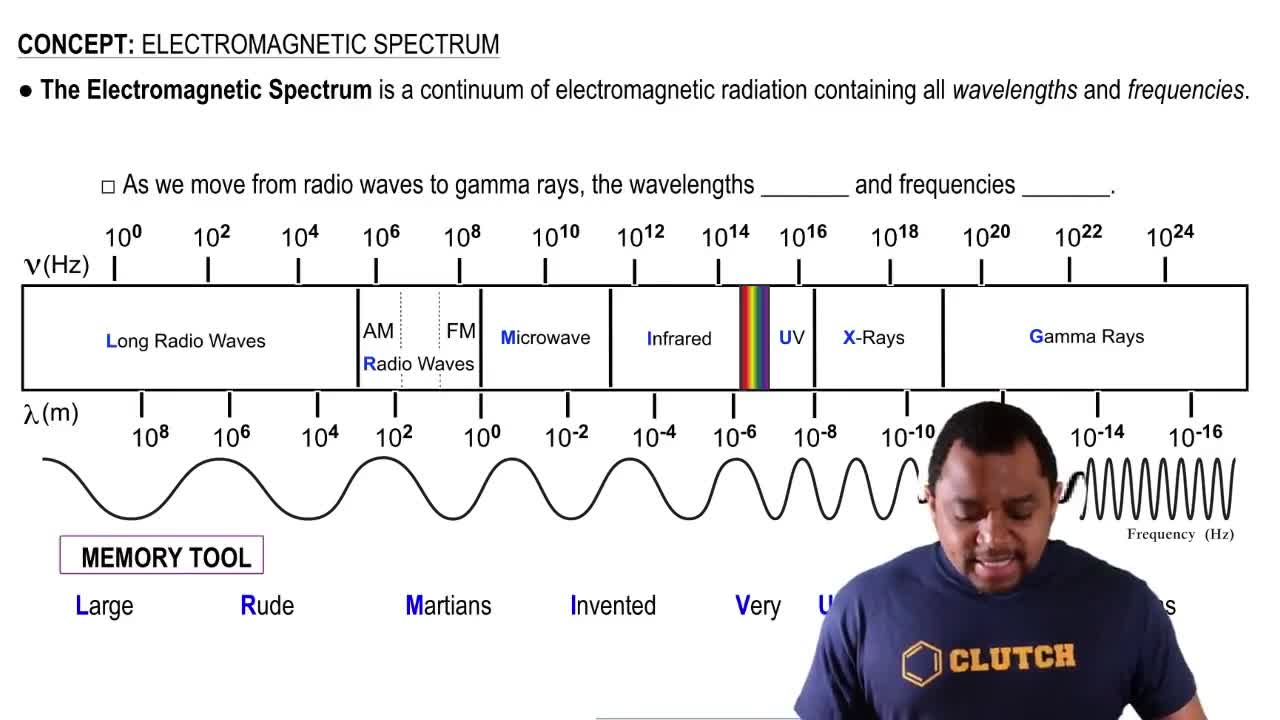Label each of the following statements as true or false. c. X rays travel faster than microwaves.
List the following types of electromagnetic radiation in order of increasing wavelength: (a) the gamma rays produced by a radioactive nuclide used in medical imaging; (b) radiation from an FM radio station at 93.1 MHz on the dial; (c) a radio signal from an AM radio station at 680 kHz on the dial; (d) the yellow light from sodium vapor streetlights; (e) the red light of a light-emitting diode, such as in a calculator display.
 Verified step by step guidance
Verified step by step guidanceKey Concepts
Electromagnetic Spectrum

Wavelength and Frequency Relationship

Types of Electromagnetic Radiation

Label each of the following statements as true or false. a. The frequency of radiation increases as the wavelength increases. b. Electromagnetic radiation travels through a vacuum at a constant speed, regardless of wavelength. c. Infrared light has higher frequencies than visible light. d. The glow from a fireplace, the energy within a microwave oven, and a foghorn blast are all forms of electromagnetic radiation.
Arrange the following kinds of electromagnetic radiation in order of increasing wavelength: infrared light, green light, red light, radio waves, X rays, ultraviolet light.
(a) What is the frequency of radiation that has a wavelength of 10 µm, about the size of a bacterium?
(d) What distance does electromagnetic radiation travel in 0.38 ps?
A laser pointer used in a lecture hall emits light at 650 nm. What is the frequency of this radiation?
